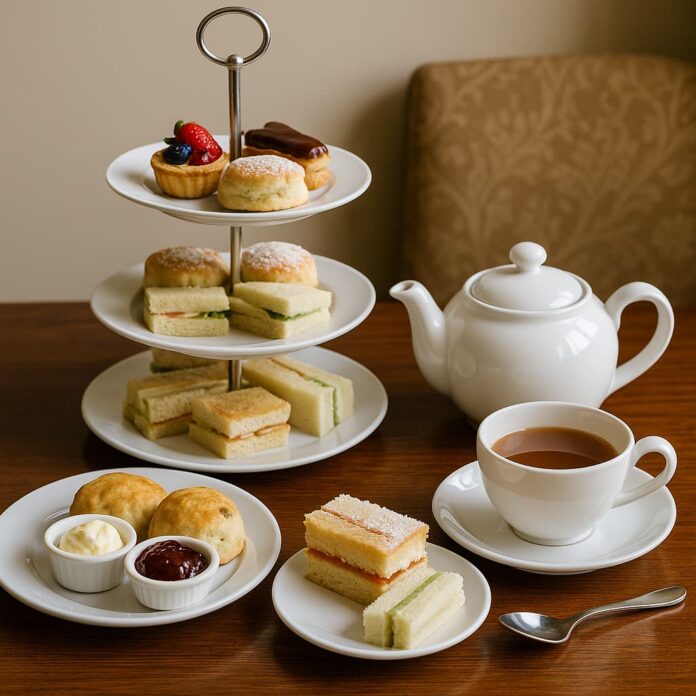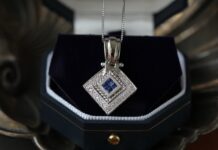To many, tea is simply a beverage. To the English, it is a way of life — a comforting ritual that celebrates calm, civility, and connection. Every cup carries echoes of history and hospitality. Whether enjoyed in a royal drawing room or a cosy countryside cottage, English tea culture remains a timeless expression of national pride, social grace, and togetherness.
10 Ways to Experience True English Tea Culture
Tea isn’t just England’s favourite drink — it’s an enduring cultural tradition, steeped in centuries of refinement. Since the 17th century, when tea first arrived from China, it has influenced society, etiquette, commerce, and even architecture. From royal palaces to factory floors, tea became a symbol of balance, comfort, and identity.
Experiencing English tea culture means understanding more than flavour; it’s about embracing the art of pause — a moment of civility amid chaos. This article explores the origins, traditions, and modern expressions of this quintessentially English ritual, guiding you through ten meaningful ways to experience tea as the English do: with patience, grace, and appreciation.
1. Discover the Fascinating History of English Tea
How It All Began
Tea first reached English shores in the 1660s, brought by merchants of the British East India Company. It was initially a luxury, enjoyed only by royalty and the elite. Queen Catherine of Braganza, wife of Charles II, made it fashionable at court, transforming it into a symbol of sophistication.
By the 18th century, tea drinking spread across classes, replacing ale and gin as the beverage of choice. It was seen as wholesome, sociable, and refined, quickly becoming a daily ritual across England.
The Social Revolution
Tea changed how England worked and socialised. It fostered the idea of “tea breaks” in factories and offices, uniting workers across backgrounds. It also redefined home life — afternoon tea gatherings became a marker of polite society. Through wars, empires, and modernity, tea endured, remaining the heartbeat of English daily life.
2. Attend a Traditional Afternoon Tea
A Royal Ritual
The concept of afternoon tea emerged in the 1840s, thanks to Anna, Duchess of Bedford, who began enjoying light snacks with tea between lunch and dinner. Her habit caught on quickly among London’s elite, becoming a daily ritual of elegance and conversation.
The Classic Afternoon Tea Experience
Expect a tiered stand filled with:
- Delicate sandwiches (cucumber, smoked salmon, egg and cress).
- Warm scones served with clotted cream and jam.
- Mini pastries and cakes — from Victoria sponge to lemon drizzle.
- A fine selection of teas, including Earl Grey, Darjeeling, and Assam.
Served on porcelain china with silver cutlery, this refined experience represents England’s commitment to civility and grace. Even today, it’s not just about eating — it’s about celebrating conversation and calm.
3. Visit England’s Most Iconic Tea Rooms
Historic Venues Worth Visiting
If you wish to feel the soul of English tea culture, visit some of the country’s legendary tea rooms:
- Fortnum & Mason (London): Established in 1707, this royal purveyor is synonymous with sophistication.
- The Ritz (London): Home to one of the most luxurious afternoon teas, complete with a pianist and immaculate service.
- Bettys Café Tea Rooms (York): A century-old icon known for its Art Deco charm and Yorkshire warmth.
- The Pump Room (Bath): A Georgian classic where visitors have sipped tea since the 18th century.
The Experience
Each of these places offers more than refreshments — they offer a journey back in time. The ambiance, service, and presentation are designed to slow time and heighten awareness, a rare quality in today’s fast-paced world.
4. Learn the Etiquette of English Tea
Tea with Grace
Etiquette is central to English tea culture. Every detail — from pouring to stirring — follows an unspoken code of manners.
Essential Etiquette Tips:
- Always pour tea first, then add milk.
- Stir gently in a back-and-forth motion (not circular), without touching the sides.
- Hold your cup by the handle — never cradle it in your palms.
- When finished, place the spoon neatly on the saucer.
- Avoid slurping or dunking biscuits at formal settings.
The Spirit Behind the Rules
These customs aren’t about rigidity but about mindfulness — taking care in small actions that express respect for oneself and others. It’s this philosophy that makes English tea not merely a drink, but a way of living with dignity.
5. Understand the Difference Between Afternoon Tea and High Tea
Two Traditions, Two Stories
While often confused, afternoon tea and high tea have distinct origins:
- Afternoon Tea began among the upper classes, served mid-afternoon with delicate cakes and sandwiches.
- High Tea emerged from working-class households, served later in the evening as a hearty meal with bread, meats, and pies.
A Cultural Reflection
The terms reflect England’s social evolution. Afternoon tea represents leisure and refinement, while high tea celebrates practicality and nourishment. Together, they show how tea transcended class, becoming a universal part of English identity.
6. Explore Popular English Tea Blends
A Palette of Flavours
Tea in England is as diverse as its people. The nation’s most beloved blends each tell a story:
- Earl Grey: Fragrant and floral, infused with bergamot oil — the epitome of sophistication.
- English Breakfast: A bold, full-bodied blend designed to awaken the senses.
- Assam: Strong and malty, ideal with milk and sugar.
- Darjeeling: Elegant and aromatic, known as the “Champagne of teas.”
- Lapsang Souchong: Smoky and rich, perfect for those who enjoy bold flavours.
Cultural Relevance
Exploring these varieties offers a glimpse into England’s colonial trade history and its evolving taste palette. Each cup reflects centuries of exploration, craftsmanship, and cultural exchange.
7. Pair Tea with Traditional English Delights
Perfect Companions
The English have perfected the art of pairing food with tea, creating a sensory experience that delights the palate:
- Scones with clotted cream and jam — a staple of afternoon tea.
- Victoria sponge cake — light, sweet, and quintessentially British.
- Tea cakes, shortbread, and crumpets — warm, comforting classics.
- Savoury pies or sausage rolls — for a hearty high tea.
Balancing Flavours
Pairing food with tea is an art of harmony. Strong teas pair beautifully with buttery or spiced dishes, while lighter teas complement fruity and floral desserts. The balance of sweet, savoury, and subtle defines the English approach to taste.
8. Experience Tea in English Literature and Pop Culture
Tea as a Cultural Symbol
Tea is deeply woven into English storytelling and art:
- In Jane Austen’s novels, tea is the backdrop for romance and civility.
- In Lewis Carroll’s “Alice in Wonderland”, the tea party becomes a metaphor for whimsy and imagination.
- In Downton Abbey, tea scenes highlight social hierarchy and manners.
- Even modern films like Paddington use tea as a motif for warmth and belonging.
Tea isn’t just a drink in these stories — it’s a symbol of comfort, order, and dialogue, reflecting England’s enduring love affair with ritual and connection.
9. Visit a Tea Plantation in Cornwall
Tea Grown on English Soil
England now cultivates its own tea, combining tradition with sustainability. The Tregothnan Estate in Cornwall is the pioneer of English-grown tea, producing exceptional blends that thrive in its mild climate.
A Complete Experience
Visitors can tour the plantation, learn about cultivation, and sample exclusive blends. Beyond taste, it’s an education in modern agricultural innovation — proof that English tea culture is alive, evolving, and environmentally conscious.
10. Host Your Own English Tea Gathering
Recreate the Magic at Home
Bringing English tea culture into your home is easier than you think:
- Use fine china or vintage teacups to add elegance.
- Offer a variety of teas, catering to different palates.
- Set a tiered tray with sweet and savoury treats.
- Add background music or flowers for ambience.
The Heart of the Experience
Hosting a tea gathering isn’t about perfection — it’s about connection. It encourages conversation, mindfulness, and hospitality, allowing you to share one of England’s most treasured rituals with friends and family.
FAQs
1. How did tea become a national tradition in England?
Tea became central to English culture in the 17th century after traders imported it from China. It gained royal endorsement through Queen Catherine of Braganza, wife of Charles II, who made it fashionable at court. By the 18th century, tea drinking spread across all classes, replacing alcohol as a daily staple. It came to symbolise refinement, relaxation, and social connection, evolving into a cherished national ritual that reflects England’s grace and civility.
2. What makes English tea culture unique from others?
English tea culture emphasises ritual, etiquette, and conversation, making it more than a drink — it’s a ceremony of calm and courtesy. Afternoon tea, served with pastries and sandwiches, symbolises refinement and leisure. Unlike fast-paced coffee cultures, English tea invites people to slow down, connect, and appreciate the present moment. Its emphasis on balance, composure, and companionship defines it as a social art form rooted in timeless hospitality.
3. What’s the correct way to prepare English tea?
A perfect English tea begins with freshly boiled water poured over loose-leaf tea or a quality bag. Let it steep for three to five minutes, depending on strength preference. Add milk after pouring the tea to maintain flavour balance. Sugar or honey is optional. Avoid re-boiling water, as it affects oxygen levels and taste. This method ensures a smooth, aromatic brew — the hallmark of authentic English tea tradition.
4. Why is milk traditionally added to tea in England?
Milk was first added to tea in the 17th century to protect delicate porcelain cups from cracking under heat. Over time, it became part of English custom and taste. Milk softens strong black teas like Assam or English Breakfast, creating a smoother, creamier flavour. Today, the milk-first or tea-first debate continues, but both approaches reflect the deep-rooted ritual and personal preference that define English tea culture.
5. What are England’s most famous tea brands?
England is home to several heritage tea brands that shaped global tea culture. Twinings, founded in 1706, remains a royal favourite. Fortnum & Mason is synonymous with luxury and history. PG Tips and Yorkshire Tea offer beloved everyday blends known for strength and quality. These brands represent centuries of craftsmanship, blending tradition and innovation to uphold England’s global reputation for producing exceptional, flavourful tea enjoyed worldwide.
6. Is tea still as popular among younger generations?
Yes, tea remains beloved, though its forms have evolved. Younger generations are exploring artisan blends, herbal infusions, and sustainable sourcing, embracing both tradition and innovation. Trendy tea houses and wellness cafés offer modern experiences like matcha lattes and cold brews. Social media has also revived afternoon tea’s charm. This evolving appreciation ensures tea remains a timeless symbol of calm and connection across generations in contemporary English culture.
7. What values does English tea culture represent today?
English tea culture symbolises harmony, patience, and togetherness. It represents the value of slowing down, sharing time with others, and appreciating life’s quieter moments. Whether at home or in a tearoom, tea fosters empathy, respect, and mindfulness. It bridges class, age, and background, reflecting England’s enduring belief in civility and connection. Even in modern times, tea continues to embody the essence of English warmth and grace.
Conclusion: The Soul of English Tea Culture
Tea remains one of the most enduring aspects of English life — a bridge between past and present, simplicity and sophistication. It has seen empires rise and fall, yet its message remains constant: pause, connect, and appreciate the moment.
To experience English tea culture is to witness the nation’s essence — grace, warmth, and quiet strength. Whether in a grand hotel or a humble kitchen, a shared cup of tea represents everything quintessentially English: community, comfort, and continuity.






















